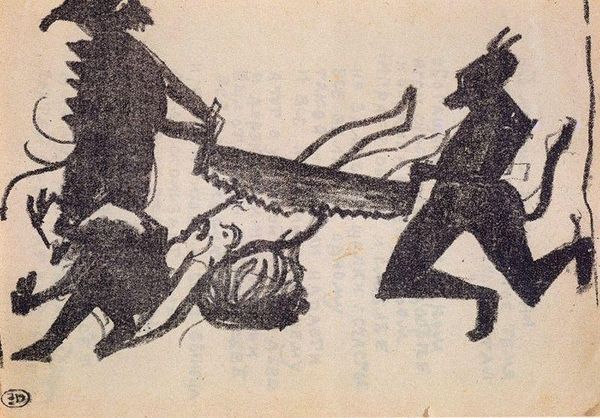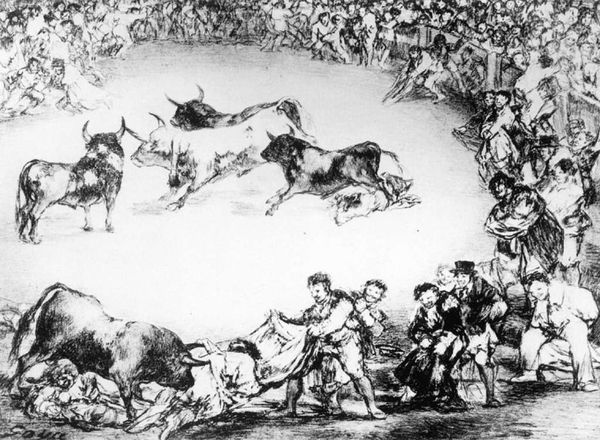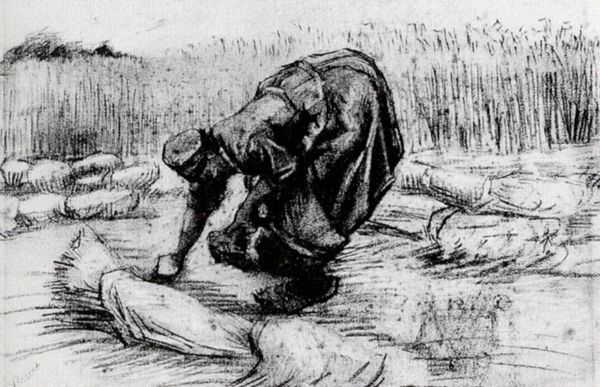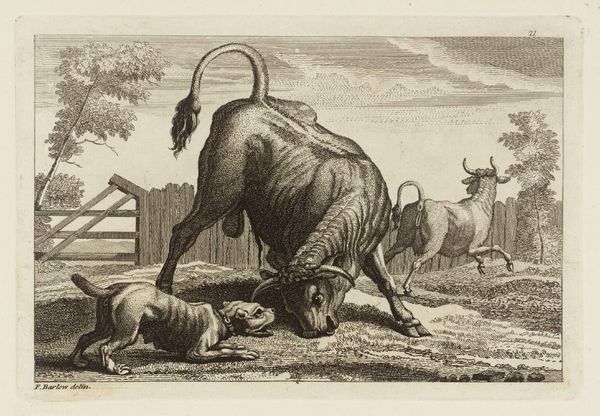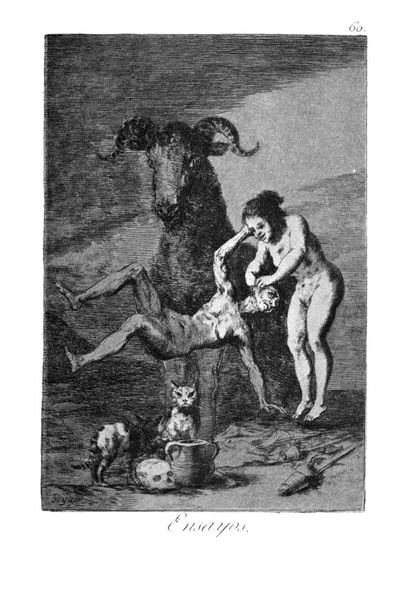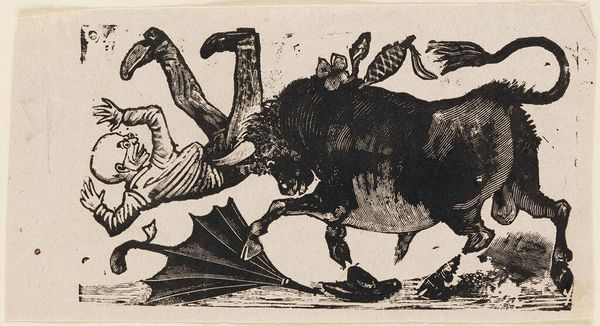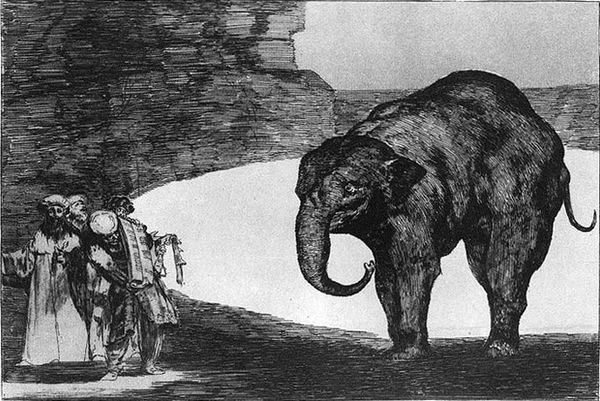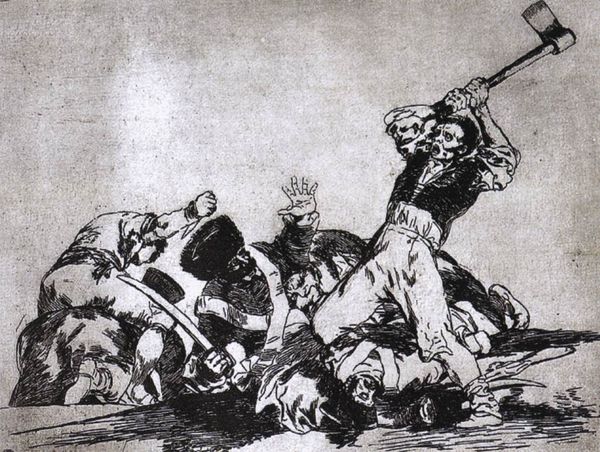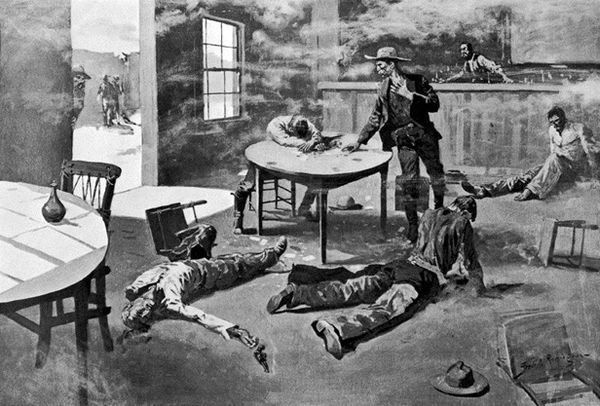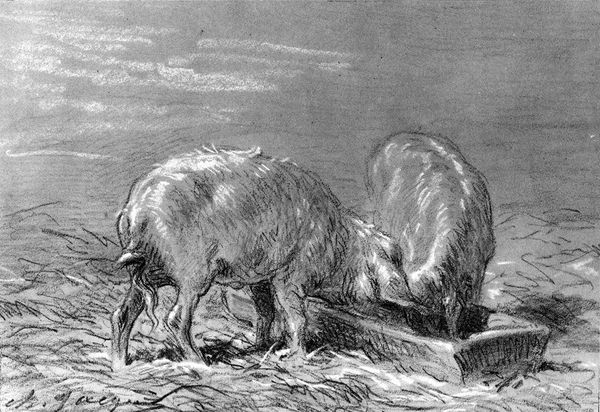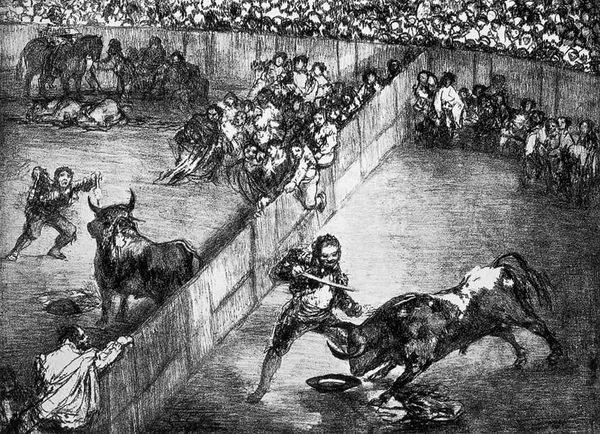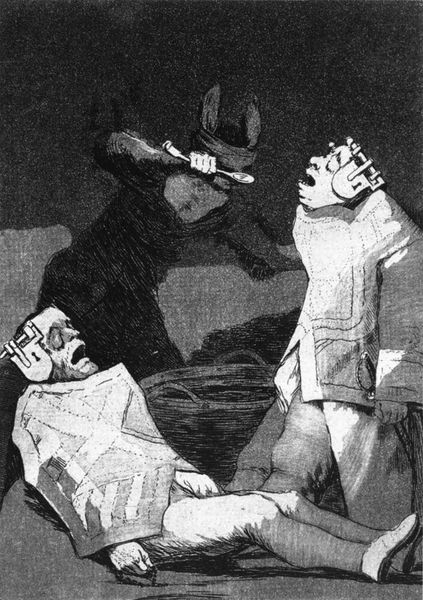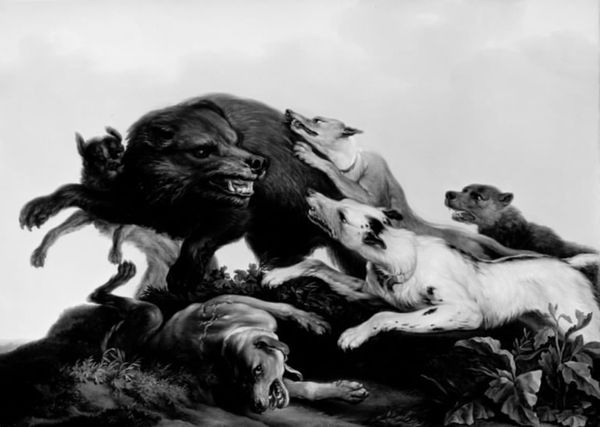
print, etching, graphite, charcoal
#
narrative-art
# print
#
etching
#
pencil sketch
#
charcoal drawing
#
figuration
#
romanticism
#
graphite
#
genre-painting
#
charcoal
#
history-painting
#
trompe-l'oeil
#
graphite
#
realism
Dimensions: 24.5 x 35.5 cm
Copyright: Public domain
Editor: Here we have Francisco Goya's "Unfortunate Events in the Front Seats of the Ring of Madrid" from 1816, an etching printed with graphite and charcoal. It's certainly dramatic, full of energy and violence. All these swirling figures... What do you see in this piece, considering its place in history? Curator: Well, considering the title, it depicts a bullfighting disaster, but Goya wasn't merely documenting an event. Think about the political climate in Spain then: Ferdinand VII had restored absolute monarchy, suppressing liberal ideas. Bullfighting, initially a noble sport, became increasingly popular across social classes. Editor: So, this isn’t just about a tragic accident in the arena? Curator: Exactly. Goya, known for his social commentary, uses this scene as a metaphor. The chaos, the trampling – it could represent the brutal suppression of the Spanish people. He's showing us the dangers inherent in spectacle, in the unthinking following of tradition, isn't he? How does the composition strike you? Editor: It feels deliberately unbalanced. All the action is on one side, with that ominous blank space looming. It really heightens the sense of unease. Curator: Precisely. And that perspective, looking down on the carnage, is like a commentary from afar. Is Goya implicated or detached? The blank space could suggest apathy, the elite turning a blind eye. Art serving a specific function in critiquing sociopolitical failings and highlighting moral shortcomings. What do you think? Editor: I'd been focusing on the immediacy of the disaster, but understanding the sociopolitical background adds another layer of interpretation entirely! Curator: Indeed. And that is precisely the kind of analysis we strive to encourage, looking to historical roots in all visual communications and experiences. Thanks for providing your take today!
Comments
No comments
Be the first to comment and join the conversation on the ultimate creative platform.
